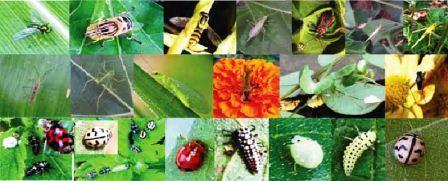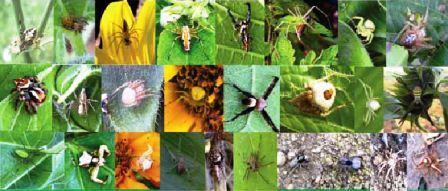Ecological Engineering for Pest Management
Ecological Engineering for Pest Management
Ecological engineering for pest management has recently emerged as a paradigm for considering pest management approaches that rely on the use of cultural techniques to effect habitat manipulation and to enhance biological control. The cultural practices are informed by ecological knowledge rather than on high technology approaches such as synthetic pesticides and genetically engineered crops.
Natural enemies may require
- Food in the form of pollen and nectar for adult natural enemies
- Shelters such as overwintering sites, moderate microclimate etc.
- Alternate hosts when primary hosts are not present.
Ecological engineering for pest management – Above ground
- Raise the flowering plants / compatible cash crops along the orchard border by arranging shorter plants towards main crop and taller plants towards the border to attract natural enemies as well as to avoid immigrating pest population
- Grow flowering plants on the internal bunds inside the orchard
- Not to uproot weed plants those are growing naturally like Tridax procumbens, Ageratum sp, Alternanthera sp etc. which act as nectar source for natural enemies,
- Not to apply broad spectrum chemical pesticides, when the P: D ratio is favourable. The plant compensation ability should also be considered before applying chemical pesticides.
Ecological engineering for pest management – Below ground
- Keep soils covered year-round with living vegetation and/or crop residue.
- Add organic matter in the form of farm yard manure (FYM), Vermicompost, crop residue which enhance below ground biodiversity.
- Reduce tillage intensity so that hibernating natural enemies can be saved.
- Apply balanced dose of nutrients using biofertilizers.
- Apply mycorrhiza and plant growth promoting rhizobacteria (PGPR)
- Apply Trichoderma spp. and Pseudomonas fluorescens as seed/seedling/planting material, nursery treatment and soil application (if commercial products are used, check for label claim. However, biopesticides produced by farmers for own consumption in their fields, registration is not required).
Due to enhancement of biodiversity by the flowering plants, parasitoids and predators (natural enemies) number also will increase due to availability of nectar, pollen, fruits, insects, etc. The major predators are a wide variety of spiders, ladybird beetles, long horned grasshoppers, Chrysoperla, earwigs, etc.
Good insectary plants belonging to Leguminaceae, Graminaceae, Brassicaceae, Asteraceae etc. families

The flowering plants suggested under Ecological Engineering for pest management strategy are known as attractant plants to the natural enemies of the selected pests. The information is based on published research literature however, the actual selection of flowering plants could be based on availability, agro-climatic conditions and soil types.
Biodiversity of natural enemies observed in Ecological Engineering field at NIPHM
Biodiversity of natural enemies: Parasitoids

Biodiversity of natural enemies: Predators

Biodiversity of natural enemies: Spiders

Source: NIPHM, Directorate of Plant Protection, Quarantine & Storage
Last Modified : 3/1/2020
This topic covers the Information related to Crop ...
